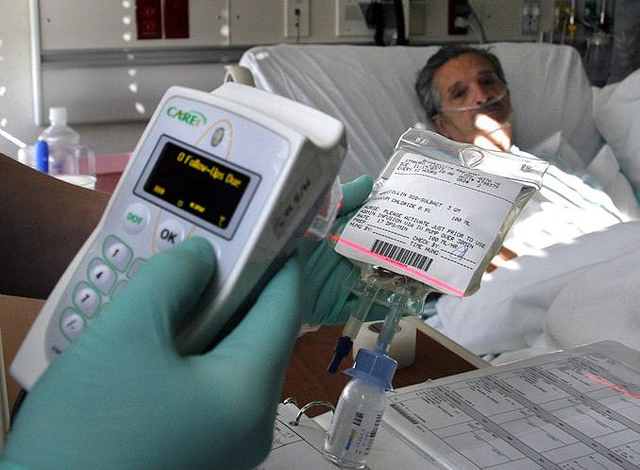News
Study puts Hernando hospitals among worst for inflating prices

Those of you who don't think Hernando County has much of a national profile should know about a new report on hospital pricing from the country's largest nursing organization.
Based on information hospitals submit to the federal government, the study shows that two of the 10 most overpriced hospitals in the United States are right here in Hernando — Bayfront Health Brooksville, formerly Brooksville Regional Hospital, at No. 7, and Oak Hill Hospital, which ranked 10th.
And because the data from Bayfront Health Brooksville includes that of Bayfront Health Spring Hill, the county can actually boast that all three of its hospitals are among the country's leaders in price-gouging.
That's the term used by the group that wrote the report, National Nurses United, and considering it found that all of the hospitals in Hernando charge more than 10 times the cost of delivering services, it certainly seems justified.
The obvious way to protest these inflated prices — and, especially if you are uninsured or under-insured, to save yourself from potential financial ruin — would be to drive to another hospital whenever possible.
But you might have to drive a long way. After New Jersey, hospital prices in Florida are the second-most inflated in the country.
Also, make sure to avoid institutions run by Nashville-based Hospital Corporation of America.
Including Oak Hill, eight of HCA's facilities in the Tampa Bay area — including ones in Hudson, Trinity, Brandon, Largo, Sun City Center and St. Petersburg — made National Nurses' list of the top 100 overpriced hospitals.
So did Bayfront Health Dade City, which, like its sister hospitals in Spring Hill and Brooksville, is owned by Health Management Associates of Naples.
So, clearly, a common theme among overpriced hospitals is ownership by a for-profit company. Nationally, such corporations charge an average of more than five times the cost of their services.
This is part of a strategy to squeeze the most revenue possible out of each market, and apparently an effective one, said Chuck Idelson, the National Nurses United spokesman; his organization's study also showed that the chains with the highest prices generally post the highest profits.
The most inflated prices tend to be in isolated markets without competition from lower-priced nonprofit hospitals, which is why Hernando is making such a name for itself when it comes to extortionary hospital costs.
A similar report in May from the federal Centers for Medicare and Medicaid Service showed that hospitals in Hernando were far more expensive than the state average and among the highest in the Tampa Bay area.
Hospital representatives told me the same thing then as they did last week — the same thing hospitals all over the country say when this subject comes up:
Nobody really pays these crazy prices.
Particularly in retirement destinations such as Hernando, a large percentage of patients are covered by Medicare, which pays a flat fee regardless of the list price.
Private insurers can negotiate payments far lower than list. So can uninsured patients, many of whom — the ones whose income is less than twice the federal poverty level — pay nothing at all.
But, of course, these prices wouldn't be set so high in the first place if they didn't somehow trickle down to consumers and therefore to hospitals' bottom lines.
These prices are the starting point for negotiations with both insurance companies and uninsured patients. And, as with a car's sticker price, a higher asking price usually mean a higher purchase price.
Also, in counties such as Hernando, without a lot of other options, for-profit hospitals can demand higher prices from insurers, which are under pressure to sign up providers in every community.
Insurers can be at a further disadvantage in such markets because they likely represent relatively few patients, said Dr. David Goodman of the University of Dartmouth's Atlas Project, which documents the distribution of health care resources.
"High prices can certainly lead to high cost when the negotiating power of insurance companies is low," Goodman said.
These prices are passed on to insured patents who have to pick up the parts of the bills that aren't covered — bigger and bigger parts every year, it seems.
So, it's no wonder that the leading cause of personal bankruptcy in this country is health care costs. And being the home of extremely high hospital prices is kind of like being the state's sinkhole capital — not a distinction to brag about.
Study puts Hernando hospitals among worst for inflating prices 01/17/14 [Last modified: Friday, January 17, 2014 7:27pm]